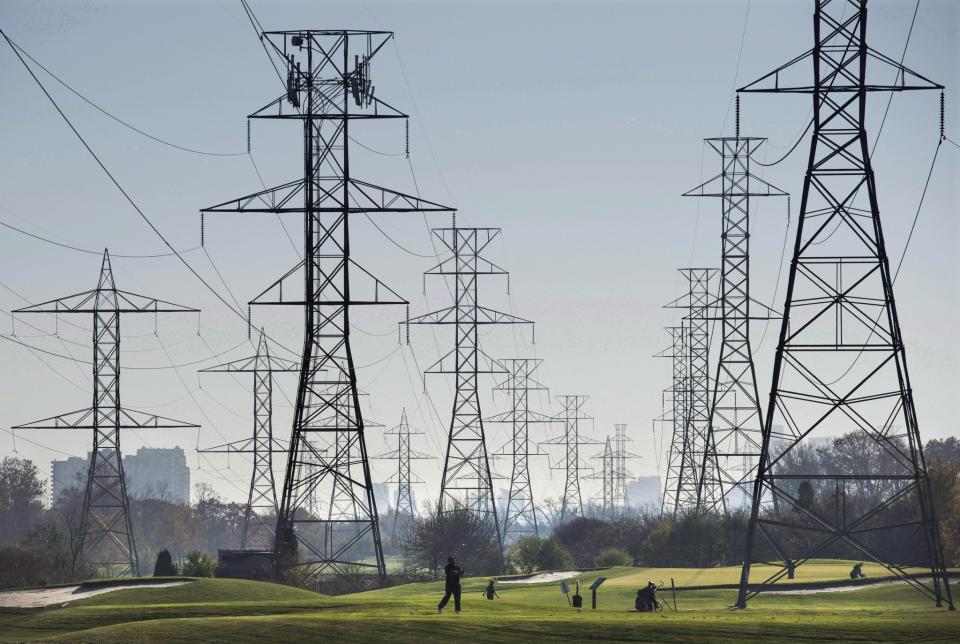No 'magic bullet' solution to lower hydro rates in Ontario

If there was a literal political football for the province of Ontario, the pigskin would be painted with that little red electrical plug that Hydro One adapted from the old Ontario Hydro logo.
First there was Mike Harris’ attempted privatization of the hydro system, then the Ernie Eves try at fixing rates, then the Dalton McGuinty spending and gas plant cancellations. The latest punt was unveiled last week by Premier Kathleen Wynne: a 17 per cent cut to residential hydro bills (on top of an earlier 8 per cent HST rebate), created by stretching costs over a longer time frame.
Whether the move will save the Liberals in next year’s election is up in the air. What’s certain is that electricity rates in Ontario have risen far faster than inflation over the past several years.
Last year, Bank of Montreal Doug Porter calculated that residential electricity prices had surged 15.4 per cent in Ontario from 2015-2016 and at an average rate of 7 per cent since 2009, versus total inflation just shy of 2 per cent.
Rates in the rest of the country general have not had the same increase, although the makeup of the different systems – Ontario generates much of its electricity with pricey nuclear plants, while Quebec, Manitoba and B.C. use their abundant river systems to generate cheap hydroelectric power – makes an apples-to-apples comparison difficult.
It raises the question: tax-bill hocus-pocus aside, are there other options on the table for getting hydro costs under control?
Sheila Block, senior economist at the Canadian Centre for Policy Alternatives, says the hard truth is that the current situation has been a long time in the making.
“I think there have been a number of errors that have been made, and those errors have been made over the past 20-25 years,” she says.
She paints the current situation as one with little wiggle room for the government, due to fixed power-supply contracts signed in the mid-2000s when the new Liberal government was trying to fast-track an expansion and greening of the electricity system. This followed years of neglect from previous governments that led to capacity shortages that forced the province to often import electricity from the United States.
“The biggest error I think maybe was the underinvestment that happened,” she said.
With the government wanting to build generation capacity and insulate itself from cost overruns, it turned to the private sector, overpaying generating companies to come to the province and signing 20-year contracts that guaranteed revenue no matter if the capacity was used.
Unfortunately, the government overestimated how much capacity they needed, having expected a faster take-up of electric cars and not foreseeing the 2008 financial crisis and retreat of Ontario’s manufacturing sector.
“It’s not shocking that those forecasts were off. I think the question we have to ask is: if you tie yourself to these long-term contracts with the private sector, how does that reduce your flexibility to respond to changes?” says Block.
With those contracts not set to begin expiring until 2023 at the earliest, there’s little the government can do to reduce the payouts.
Over time, the costs have been huge. A 2015 report by Ontario Auditor-General Bonnie Lysyk said Ontarians paid $37 billion more than market price for electricity between 2006 and 2014.
Before piling on to Dalton McGuinty as the architect of this crisis, it’s important to understand the context of these decisions, says Jatin Nathwani, Ontario Research Chair in Public Policy and Sustainable Energy at the University of Waterloo.
“If you go back to 2004-05, you remember the blackouts, and the high power rates that brought down the Ernie Eves government,” he says. “That’s what we’ve done, we’ve invested in this sector and that’s cost money and that’s what we’re paying for now.”
In other words, Kathleen Wynne can do little besides figuring out who will bear the costs for the burden.
According to Nathwani, a larger mistake would have been abandoning contracts legally signed based on the realization that they were bad deals.
“In a system where contractual obligations are legal, you can’t rip things up. If you do it gives terrible signals to future investors,” he says.
The province is currently updating its long-term energy plan, and the bad contracts should eventually work their way out of the system. But for now, there are no magic bullets. On the plus side, Ontario does have abundant capacity to absorb the eventual needs of electric cars and other demands.
“If you look back and point the finger at others, there’s a enough blame to go around,” says Nathwani. “But from what we have to what we need to do for the future, we’re in not as bad a situation as the press is trying to make it out.”
More energy industry news on Yahoo Canada Finance:

 Yahoo Finance
Yahoo Finance 
